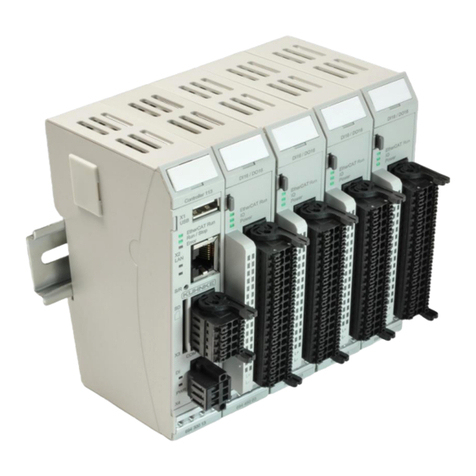
Kendrion Kuhnke Automation GmbH Table of Contents
Kuhnke FIO CAM Control (E808GB / 1023161) 3
03.09.2020
4.1.1 Earthing............................................................................................................................................17
4.1.2 Mounting...........................................................................................................................................18
4.2 Ports...................................................................................................................................................19
4.2.1 General information..........................................................................................................................19
4.2.2 I/O connector....................................................................................................................................19
4.2.3 CAN connector.................................................................................................................................20
5 CAM Control..................................................................................................................................................22
5.1.1 Supply voltage..................................................................................................................................22
5.1.2 Status LEDs .....................................................................................................................................22
5.1.3 Function............................................................................................................................................24
6 Software.........................................................................................................................................................26
6.1 Download...........................................................................................................................................26
6.2 Installation..........................................................................................................................................26
6.3 Start/Exit.............................................................................................................................................27
6.4 CAN USB driver.................................................................................................................................27
7 FIOCAM Creator............................................................................................................................................30
7.1 Cam programming .............................................................................................................................30
7.1.1 Editing the cams...............................................................................................................................30
7.1.2 Diagram view....................................................................................................................................32
7.2 Program .............................................................................................................................................33
7.2.1 Info ...................................................................................................................................................33
7.2.2 Exit ...................................................................................................................................................33
7.3 Project................................................................................................................................................34
7.3.1 new...................................................................................................................................................34
7.3.2 open .................................................................................................................................................34
7.3.3 save..................................................................................................................................................34
7.3.4 save as ............................................................................................................................................35
7.3.5 Settings ............................................................................................................................................35
7.4 Control................................................................................................................................................38
7.4.1 Dead-Times......................................................................................................................................38
7.4.2 Speed Change Scale .......................................................................................................................38
7.4.3 Track Masks.....................................................................................................................................39
7.4.4 Options.............................................................................................................................................40
7.5 Device................................................................................................................................................48
7.5.1 Online...............................................................................................................................................48
7.5.2 Offline...............................................................................................................................................49
7.5.3 Download .........................................................................................................................................49
7.5.4 Upload..............................................................................................................................................49
7.5.5 Erase................................................................................................................................................49
7.5.6 Parameter.........................................................................................................................................50
8 Examples.......................................................................................................................................................51
8.1 CODESYS software solution .............................................................................................................51
8.2 Time cam example.............................................................................................................................54
9 Appendix........................................................................................................................................................55
9.1 Technical data....................................................................................................................................55
9.2 Order specifications ...........................................................................................................................56
9.3 References.........................................................................................................................................57
9.4 Index ..................................................................................................................................................58
10 Sales & Service...........................................................................................................................................59































